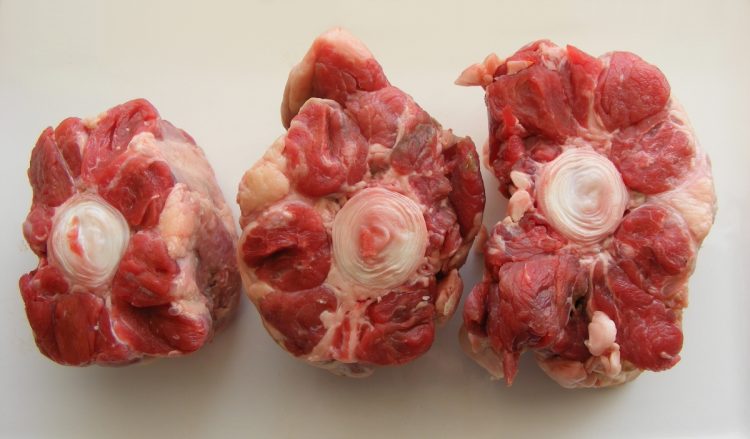The Culinary Delicacy of Oxtail: History, Preparation, and Global Appeal

gelatinous texture, it has become a sought-after ingredient for comforting stews, soups, and braises. This article delves into the history, culinary uses, nutritional benefits, and cultural significance of oxtail, highlighting why it remains a timeless favorite for food enthusiasts.
What Is Oxtail?
Oxtail, as the name suggests, is the tail of cattle. Traditionally sourced from oxen, it is now commonly obtained from regular cows. It is a bony, fatty cut with a small amount of meat encasing the bone. The tail is rich in collagen and gelatin, which are released during slow cooking, resulting in a luxurious texture and deeply savory flavor.
Oxtail’s unique characteristics make it ideal for recipes that require extended cooking times, such as stews and braises. The slow-cooking process breaks down the connective tissue, creating a dish with a velvety, almost buttery consistency.
The History of Oxtail in Cuisine
The use of oxtail in cooking dates back centuries and is rooted in the principle of “nose-to-tail” eating, where every part of the animal is utilized to avoid waste. This practice was common among lower-income households and rural communities who couldn’t afford to discard any part of the animal. Oxtail was initially considered a “poor man’s food” due to its bony composition and the labor-intensive process required to cook it.
European Origins
In Europe, particularly in England, oxtail soup became a staple during the Middle Ages. The dish likely originated in London’s East End, where French and Flemish immigrants would combine oxtail with vegetables to create hearty soups. Over time, the dish evolved and became a celebrated part of British cuisine.
Caribbean Influence
Oxtail holds a special place in Caribbean culinary traditions, particularly in Jamaica. Introduced during the colonial period, oxtail was embraced by enslaved Africans who transformed the tough cut into a flavorful stew. Jamaican oxtail stew, made with beans, herbs, and spices, is now a beloved national dish.
Asian and African Usage
In Asia, particularly in Chinese and Korean cuisines, oxtail is used in soups and broths. It is prized for its ability to create nutrient-rich, deeply flavorful stocks. Similarly, in African countries like Nigeria and South Africa, oxtail is used in stews and soups that are rich in spices and herbs.
How to Prepare Oxtail
Cooking oxtail requires patience and care to extract its maximum flavor and achieve a tender texture. Below are key steps and tips for preparing this delectable cut.
1. Preparation and Cleaning
Before cooking, oxtail needs thorough cleaning. The pieces are typically cut into sections through the bone, exposing the marrow and making it easier to cook evenly. Washing the oxtail with cold water and patting it dry removes any impurities.
2. Browning the Meat
Browning is essential to enhance the flavor. The oxtail pieces are seared in hot oil until they develop a deep brown crust. This step not only locks in the flavor but also creates a rich base for sauces or broths.
3. Slow Cooking
Due to its high collagen content, oxtail is best cooked slowly over low heat. This can be achieved through braising, stewing, or simmering. Cooking times typically range from 2 to 4 hours, depending on the method and desired tenderness.
Popular Oxtail Dishes Around the World
Oxtail is celebrated globally, with each culture adding its unique twist to the preparation. Below are some of the most famous oxtail dishes.
1. Jamaican Oxtail Stew
This dish is a staple in Jamaican households and restaurants. Oxtail is slow-cooked with spices such as thyme, garlic, and scotch bonnet peppers, along with butter beans for added texture. The result is a rich, spicy stew served over rice and peas.
2. British Oxtail Soup
In England, oxtail soup is a traditional comfort food. The dish combines oxtail with root vegetables, herbs, and a splash of sherry or wine, resulting in a hearty and aromatic soup.
3. Korean Seolleongtang
In Korean cuisine, oxtail is used to make seolleongtang, a milky-white soup known for its comforting and nourishing qualities. The broth is made by simmering oxtail with other beef bones for hours, extracting the marrow and collagen.
4. Italian Coda alla Vaccinara
In Rome, oxtail is the star ingredient of coda alla vaccinara, a classic Roman stew. The dish is braised with tomatoes, celery, and red wine, and is often served with pasta or polenta.
5. South African Potjiekos
Oxtail is a popular choice for potjiekos, a slow-cooked stew prepared in a cast-iron pot over an open flame. The dish incorporates vegetables, spices, and oxtail, creating a communal meal full of flavor.
Nutritional Benefits of Oxtail
Oxtail is not only delicious but also offers several nutritional benefits, making it a valuable addition to a balanced diet.
1. High in Protein
Oxtail is an excellent source of protein, essential for muscle growth and repair. A 3.5-ounce (100-gram) serving contains approximately 19 grams of protein.
2. Rich in Collagen
The high collagen content in oxtail promotes joint health and improves skin elasticity. Collagen is also beneficial for gut health and overall digestion.
3. Packed with Vitamins and Minerals
Oxtail provides essential nutrients such as iron, zinc, and vitamin B12, which are crucial for energy production, immune function, and red blood cell formation.
4. Bone Marrow Benefits
The bone marrow within the oxtail is a concentrated source of nutrients, including healthy fats, amino acids, and minerals that support bone health.
Cooking Tips and Tricks
To achieve the best results when cooking oxtail, consider the following tips:
- Use a Heavy Pot or Slow Cooker: A heavy-bottomed pot or slow cooker ensures even heat distribution and prevents burning.
- Don’t Rush the Process: Oxtail requires long cooking times to break down the tough fibers. Plan your cooking schedule accordingly.
- Skim the Fat: Oxtail can be fatty, so skim the surface of the broth or stew to remove excess fat for a cleaner flavor.
- Enhance with Aromatics: Adding herbs, spices, and vegetables during cooking elevates the dish’s flavor profile.
- Serve the Next Day: Like many stews, oxtail dishes often taste better the next day after the flavors have melded.
The Rise of Oxtail in Gourmet Cuisine
Once considered a budget-friendly cut, oxtail has become a prized ingredient in fine dining establishments. Renowned chefs use it in innovative ways, incorporating it into ravioli, terrines, and even tacos. The appeal lies in its versatility and the luxurious mouthfeel it provides when cooked properly.
The popularity of oxtail has also driven up its price in many markets. What was once an inexpensive cut is now a premium product, reflecting its demand and status as a culinary delicacy.
Sustainability and Ethical Considerations
Embracing cuts like oxtail supports sustainable eating practices. By utilizing all parts of the animal, the food industry can reduce waste and promote a more ethical approach to meat consumption. Oxtail’s resurgence aligns with the growing trend of nose-to-tail dining, encouraging consumers to appreciate the full spectrum of flavors and textures that different cuts offer.
Conclusion
Oxtail is a testament to the ingenuity of cooks worldwide who have transformed a humble cut of meat into a celebrated culinary delight. Whether simmered in a Caribbean stew, incorporated into an Italian ragu, or used in a nourishing Korean soup, oxtail showcases the beauty of slow cooking and the rich flavors that come with it.





